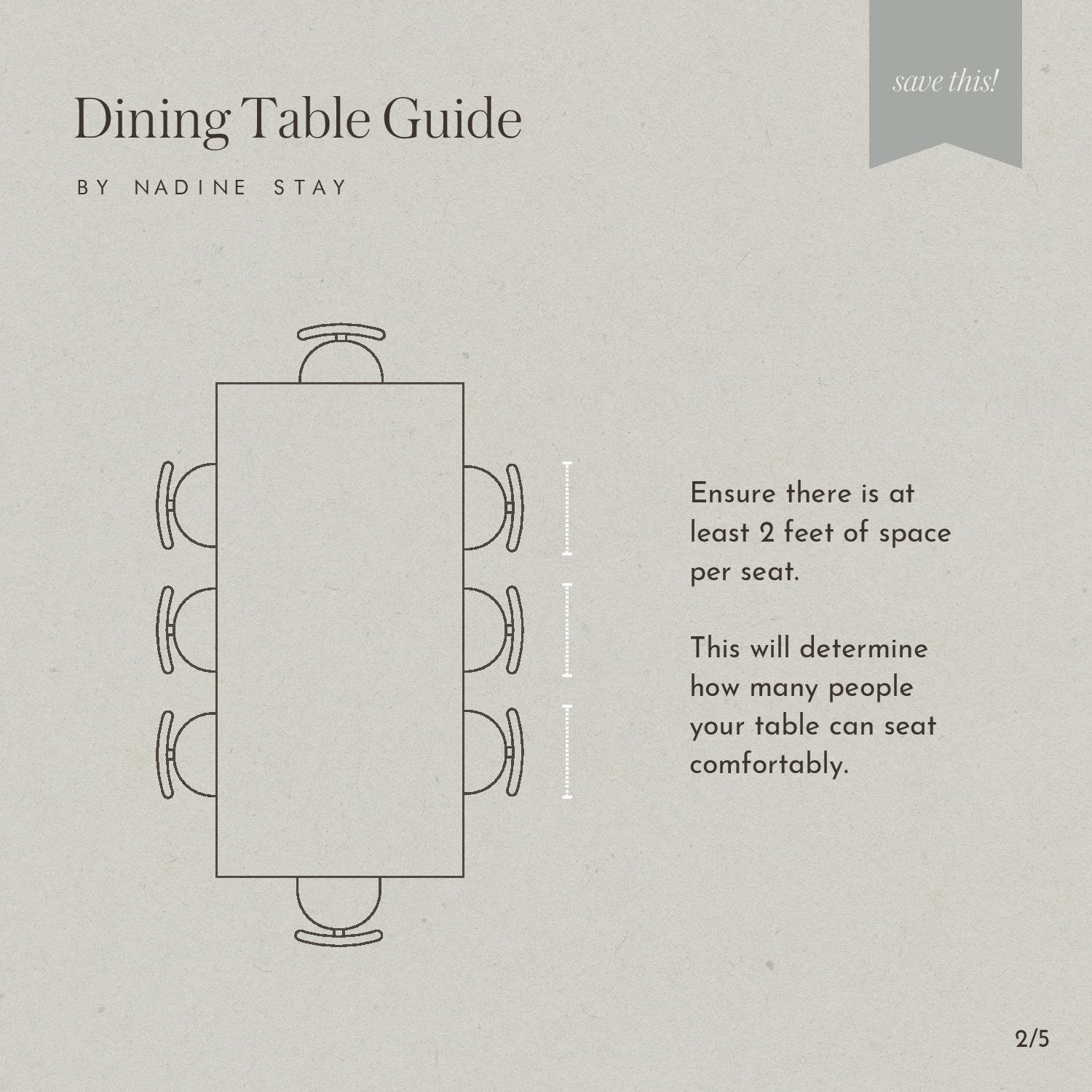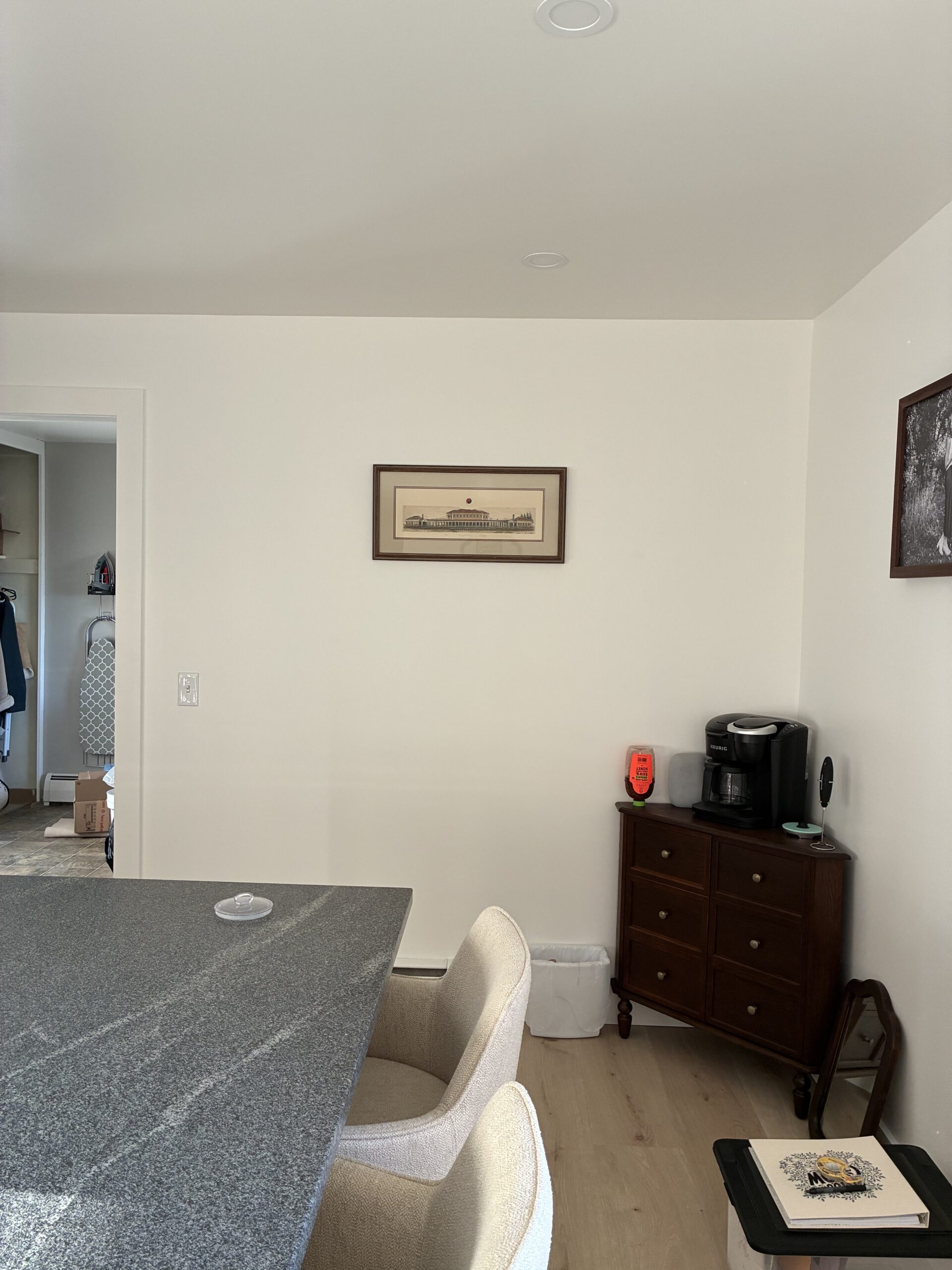The dining table is the focal point of the dining room and with so much attention being drawn to the table, it’s important to spend some time on it to get it right. Mapping out a size that’s proportionate to the space, determining the number of chairs that’ll fit, and landing on a shape are the three biggest factors in selecting a dining table. It can feel overwhelming when you’re starting from scratch, but there are some fundamental guidelines to help you make an informed decision.
Let’s break the guidelines down step by step –
DETERMINING TABLE SIZE
First things first, to determine what size dining table will fit in the space, you’ll need to do a little measuring. Measure the length and width of the room. If you have any furniture like a sideboard, measure from that instead of the wall. Now, subtract 6 ft (or 72”) from both the length and width. This is the size of the table that you can fit comfortably in the space.
There should be roughly 36” of space between the dining table and the wall or any furniture you have in the room to account for chairs and a walking path.
NOTE: If you have an open concept dining room, map out a dining room zone with painters tape. Then subtract 36” from each side to determine a table size.
SEATING FOR RECTANGLE TABLES
The general rule of thumb is 2 feet per seat. Take the total table length (in inches) and divide it by 24. This will determine how many chairs you can fit at the table length wise. If your table is at least 36” wide, you can add chairs on the ends as well.
NOTE: If your dining chairs have arms, you may need more than 2 ft per seat. Aim for 2-6” of space between chairs.
ANOTHER NOTE: If your dining table has inset legs, you may need to adjust the number of chairs that fit. This is why I prefer dining tables that have legs as close to the corners as possible.
SEATING FOR ROUND TABLES
Generally speaking, round tables can’t seat as many people as rectangle tables. To determine how many chairs can fit at a round table, multiply the table top diameter (in inches) by 3.14. Then divide by 24 (for cozy seating) or 30 (for comfortable seating).
24” per seat may seem a little snug for round tables, but it’s cozy for family dinners. For hosting or formal dinners, you’ll find that 30” per seat is more comfortable.
DETERMINING TABLE SHAPE
I like to use the shape of the room as a guide for the shape of the table. A rectangle room looks best with a rectangle table while a square room looks best with a round table.
For small spaces, like a corner nook for example, round tables are often best. They create ample walking space along the perimeter without looking too bulky for the space.
NOTE: Keep in mind that dining rooms with multiple functions (i.e. a dining room and back entry in one) may affect the shape of the table. For example, this dining room is square, but with the back entry also in the room, the dining area needs to be pushed to the side to accommodate for a walkway. The room is then divided into two zones – a dining zone and a walkway zone. With the new dining zone being rectangle, a rectangle table works best.
With all these tips in mind, I created a table size and seating diagram for you to reference.
RECTANGLE & ROUND DINING TABLES


DO YOU WANT
The Inside Scoop
Where behind the scenes, exclusive advice, and candid conversations are sent straight to your inbox every week.







